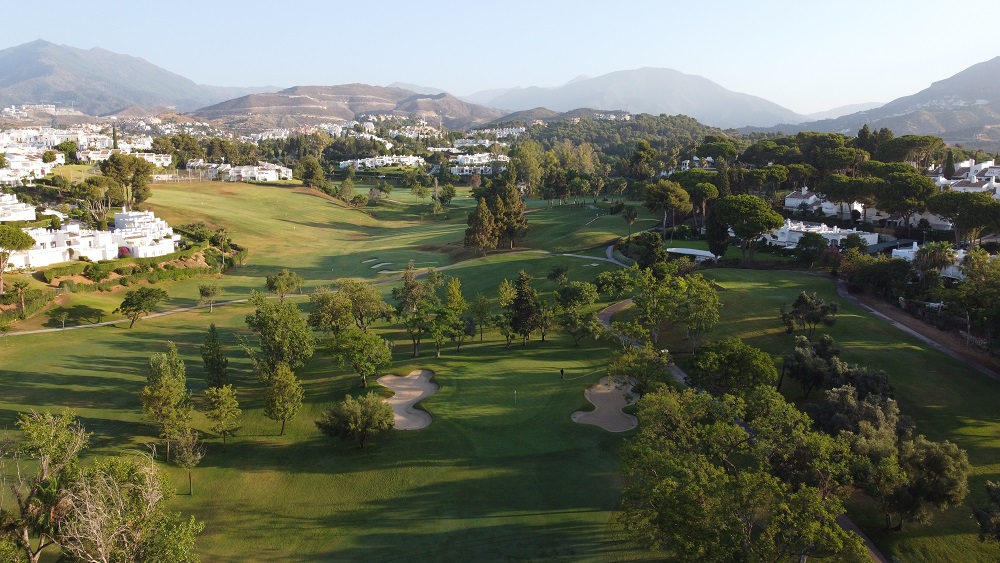How many of you know that the golf course at Aloha Golf Club was designed by Javier Arana? Aloha Golf Club – Par 72, 6,293m (6,882 yards) – has hosted the PGA Tour 3 times between 2007 and 2012 and the LET Spanish Open in 2016.

Aloha Golf Club has recently hired LOBB + Partners to rebuild its greens. The Aloha Golf Club is very proud of its heritage and its status. But the golf course’s greens have been a challenge for some years:
- half of them slope at more than 5%,
- an untenable level of the pitch at modern heights of cut.
Agronomist Luis Cornejo of Surtec, who will serve as project manager and agronomist for the rebuild, says that when the course opened in 1972, the greens were typically cut at 5.5 mm and stimped at 6 and a half feet.
According to Alfonso Erhardt, author of ‘The Golf Courses of Javier Arana’, the architect drew detailed plans of the greens. There is, however, some debate as to how precisely the final surfaces reflected his intent as he died before opening and several of them have been reworked in the intervening years.

Tim Lobb, principal of Lobb + Partners says
“At modern day green speeds, the slopes are just too steep, so our aim is to soften them while retaining their strategic intent.
I particularly like the way the greens are segmented into differnt zones with noses, tiers and low/high spots creating dividers, which we will emphasise in the revised surfaces and pinnable locations.
New and enlarged practice putting greens will also be constructed as part of the project and the area surrounding this slightly rejigged to create a better starting/arrival environment.
British-based firm CJW Golf will carry out the build, and Luis Cornejo of Surtec will provide agronomic advice and project management.
Aloha Golf Club – is it time to change to sustainable turf?
In the last 2 years, I saw several golf clubs that changed their greens (e.g. Dom Pedro Laguna Golf Course: changed to 100% Bermuda Grass; Infinitum‘s Lakes Course: Bermuda Tifway 419).
Perhaps it is not too late to think about which species of turfgrass would be more sustainable for the golf club. Not least to reduce golf course operations costs (e.g. irrigation, fertilization, etc.)
